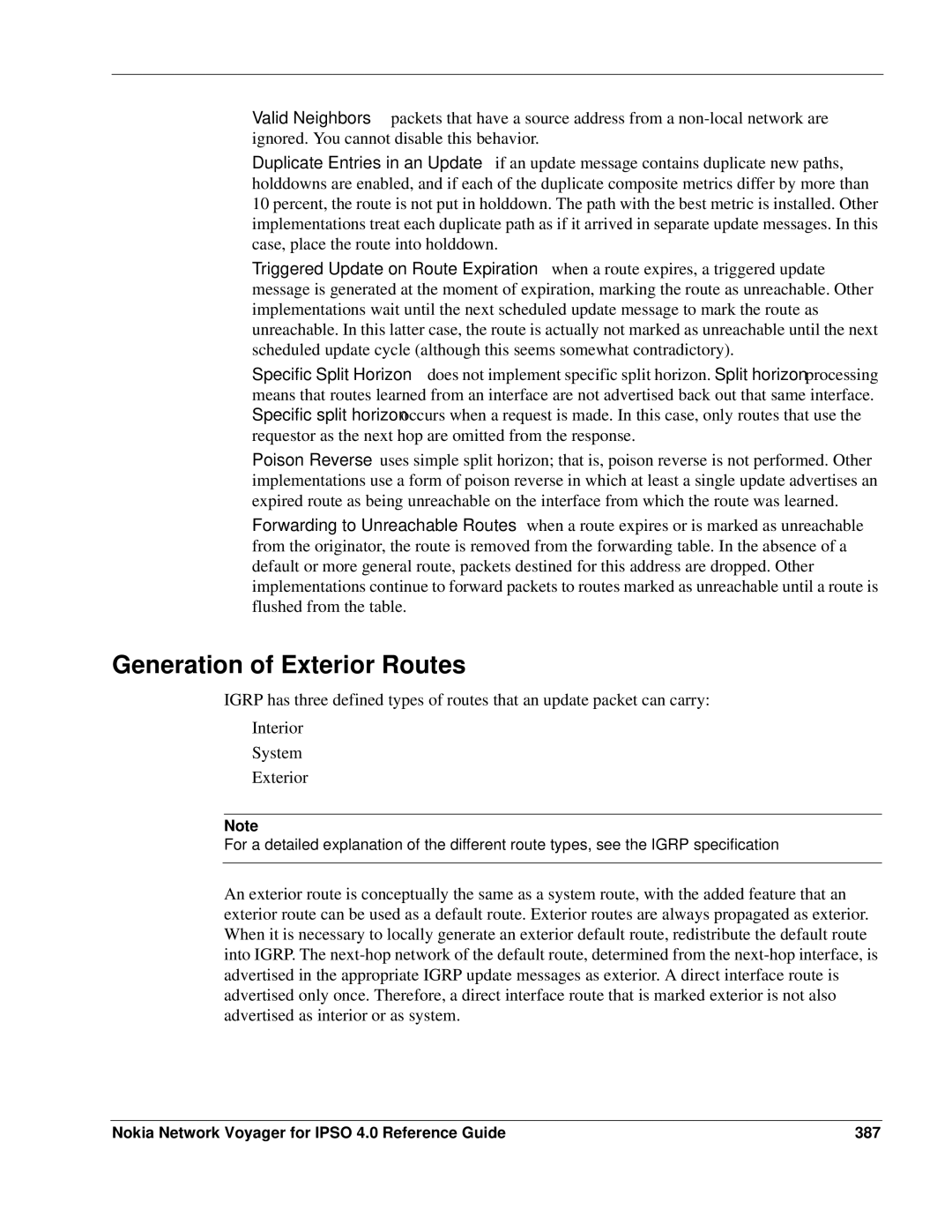
Valid Neighbors— packets that have a source address from a
Duplicate Entries in an
Triggered Update on Route
Specific Split
Poison
Forwarding to Unreachable
Generation of Exterior Routes
IGRP has three defined types of routes that an update packet can carry:
Interior
System
Exterior
Note
For a detailed explanation of the different route types, see the IGRP specification
An exterior route is conceptually the same as a system route, with the added feature that an exterior route can be used as a default route. Exterior routes are always propagated as exterior. When it is necessary to locally generate an exterior default route, redistribute the default route into IGRP. The
Nokia Network Voyager for IPSO 4.0 Reference Guide | 387 |
